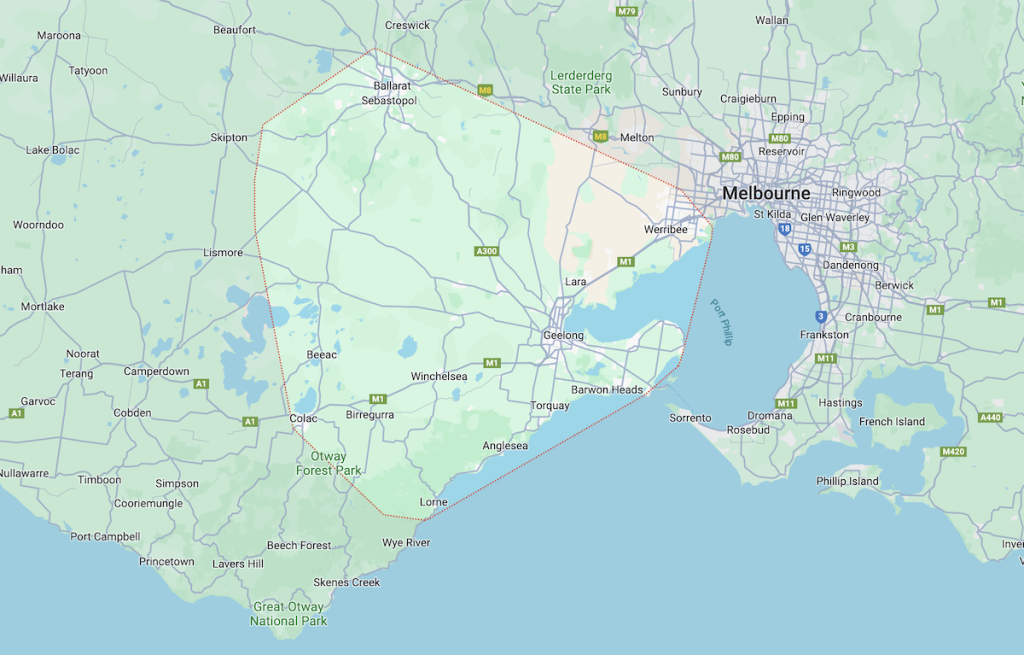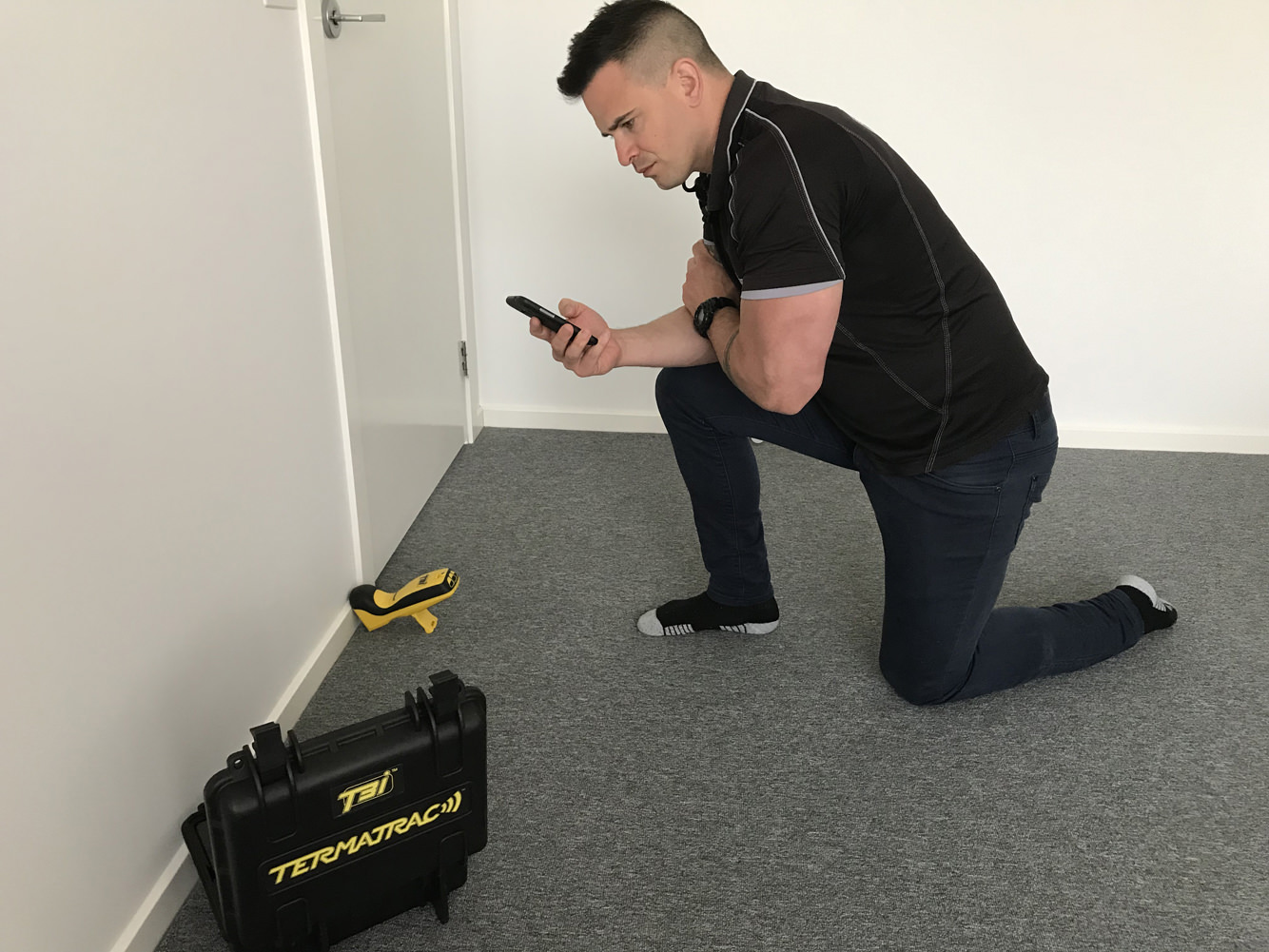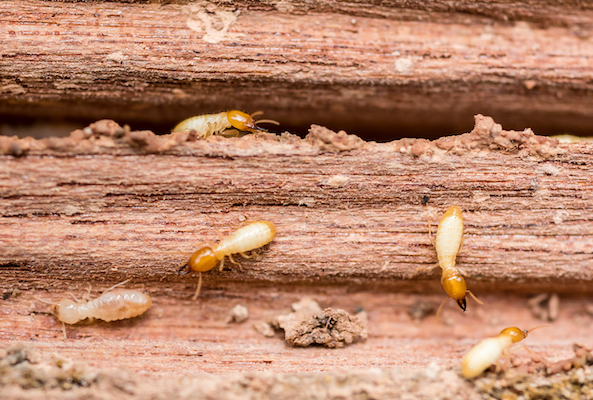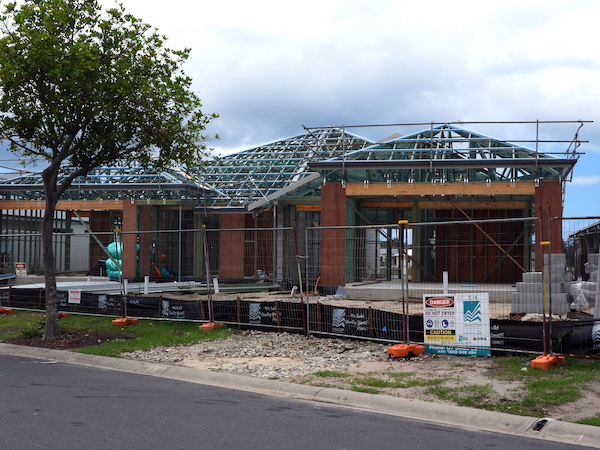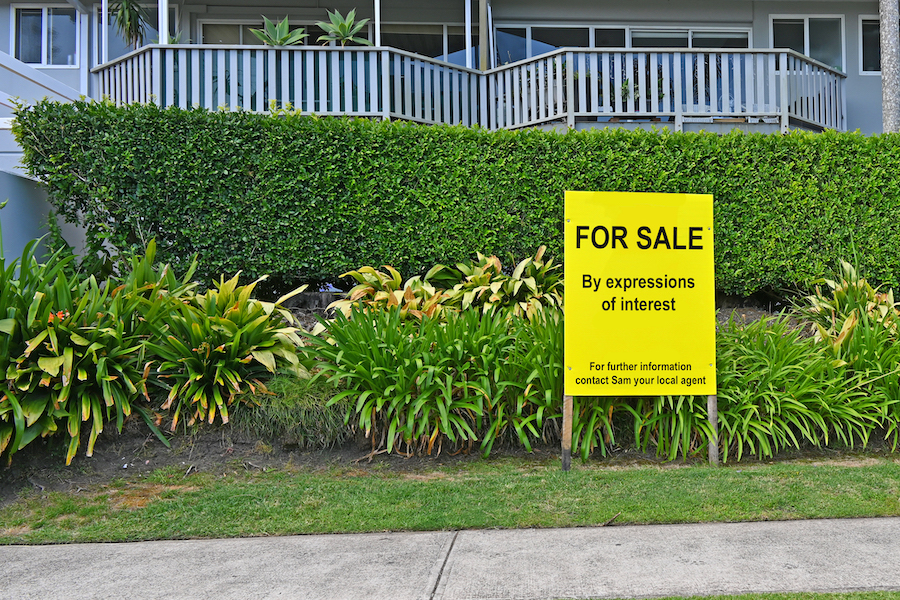
Termites in Geelong, Melbourne & Victoria
Geelong Pest Control are the trusted and experienced termite professionals protecting homes from the risk of termite attack in Geelong, across the Surf Coast and surrounding areas of Victoria.
What are the chances of a termite attack?
- CSIRO estimate that 1 in 5 houses have a history of termite attack.
- 80% of homes in Australia are within 25 m of a termite nest.
- Termites can travel up to 100 m from their nest to a feeding site.
- The chances of your home being attacked by termites is more than the risk from fire, flood and other natural disaster combined.
… and your standard home insurance does not cover you for damage from termite attack!
Protect your home with a termite management plan
Whether you have a house on piers, a house on a concrete slab or even a metal framed home, you still need to be aware of the termite risk. (Wood elements in metal framed homes are still at risk!). A key action for homeowners is to implement a termite management plan to protect their home from potential termite attack.
There are 4 key elements of a termite management plan:
1. Understanding the construction of your home
Homeowners are generally not builders, but it’s important to have a basic understanding of how your home is built, as each construction type has their weak points where termites can enter without being noticed (concealed entry). In turn, this influences the actions a homeowner should and shouldn’t take to reduce the risk of a termite attack and it especially determines the type of termite management system that should be used to provide the long-term protection for the building. Your termite inspection report will provide this important information.
2. Make your home less attractive to termites
Making your home less attractive to termites can greatly reduce the risk of a termite attack. As termites love moisture, the first action is to make sure the area around and under your house is as dry as possible. The second action is to remove potential termite food sources (such as wood mulch and firewood) from areas adjacent to the house.
4 key ways to reduce moisture around the house:
- Fix leaks to gutters and outdoor taps.
- Make sure air-conditioning and hot water tank overflows lead to a drain.
- Avoid having watering systems in garden beds next to the house.
- Make sure groundwater drains well, away from the house.
3. Have annual termite inspections
Having a professional termite inspection at least once a year is a must. It’s not just us that recommend this, it is recommended by Governments, Building Authorities and Australian Standards.
A termite inspection won’t stop a termite attack but is like a “health check” for your house. It provides information on 3 key areas:
- Are there active termites on the property?
- Are there signs of termite damage on the property?
- Are there any issues which may make a termite attack more likely?
With this information, a series of recommendations can be made regarding termite protection for the property.
If you have a termite management system in place, an annual termite inspection is required to maintain any warranty on the system.
4. Install a termite management system
A termite management system is a termite treatment that provides the long-term termite protection for your home. There are two types of termite managements system
- Liquid insecticide treatments to the soil around and under the house
- Termite monitoring / baiting system installed in the ground around the building
Termite Information
What do termites look like?
The termites that do all the damage are the worker termites. They are a very pale white / cream colour, which is why they are sometimes called “white ants”. They might superficially look like ants, but they are ants at all, in fact they are more closely related to cockroaches!
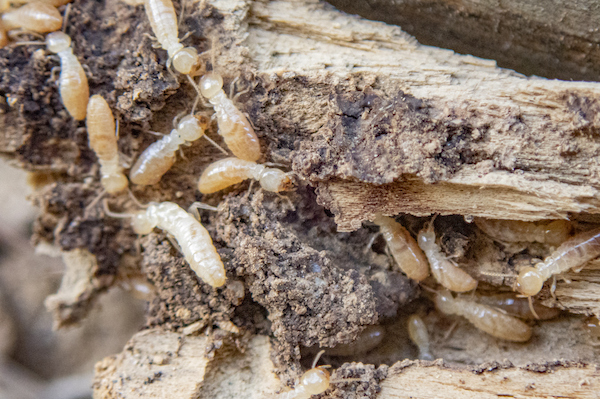
Termites or white ants?
- Termite workers are a pale, white / cream colour. Ants are black or brown in colour.
- Termites have two body segments. Ants have three obvious body segments.
- Termite antennae are straight. Ant antennae have an obvious bend or “elbow”.
- Worker termites are blind / have no eyes. Ants have obvious eyes.
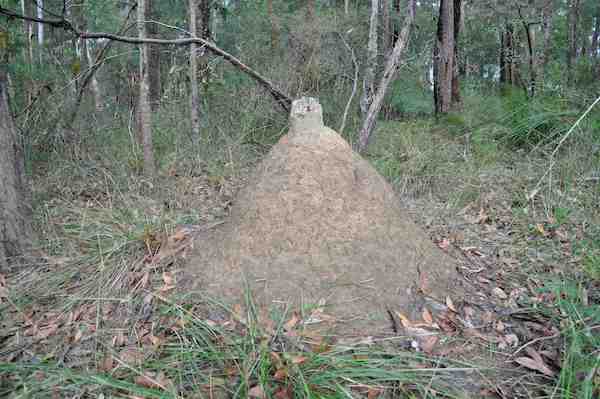
Termite Nests / Termite Mounds
Subterranean termites are the most common type of pest termite in Australia and for the most part they live and nest underground. This can make termite nests very difficult to locate.
Type of termite nest:
- Completely underground – no nest visible
- Underground with obvious mound above ground
- Nest in the trunk of trees, sometimes visible
- Arboreal nests, high up in trees, but always with a connection to the ground
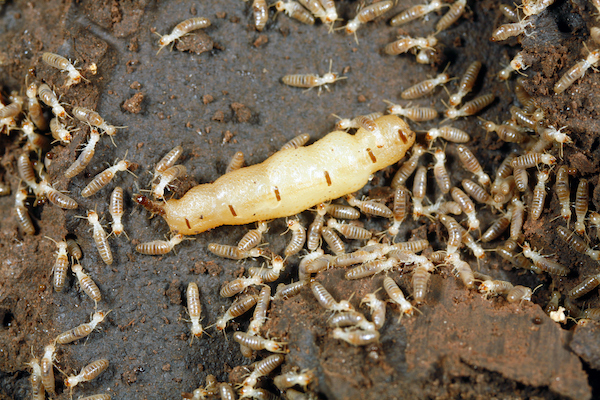
Termite Queen
The termite queen is the most important termite in the colony – she produces all the eggs, sometimes thousands a day! To kill the colony, you need to kill the queen. That’s why spraying the termites you see with a supermarket aerosol does little to destroy the nest. Sometimes termite colonies may have more than one queen and sometimes nests will produce a replacement queen when the original queen dies (although they can live for 20 years or more!).
Termite Eggs
Most people will never see termite eggs as they are kept in the colony nursery, deep in the centre of the termite nest. However, a steady production of eggs is essential in a healthy colony, allowing it to grow and produce more workers to collect food. Depending on the termite species, a healthy queen can produce thousands of eggs a day, so a termite colony can quickly grow to a size that can cause significant damage to a home.
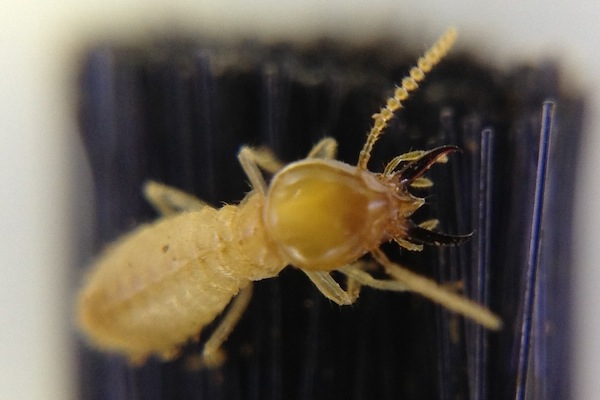
Soldiers
The termite soldiers protect the colony from predators. They look different to the worker termites in that they have dark heads and large or modified jaws. There are far fewer soldiers in a colony that workers. In a mature colony, a maximum of 1 in 20 termites will be workers, with significantly fewer in younger colonies. The termite soldiers are used by termite professionals as the main way to identify the termite species.
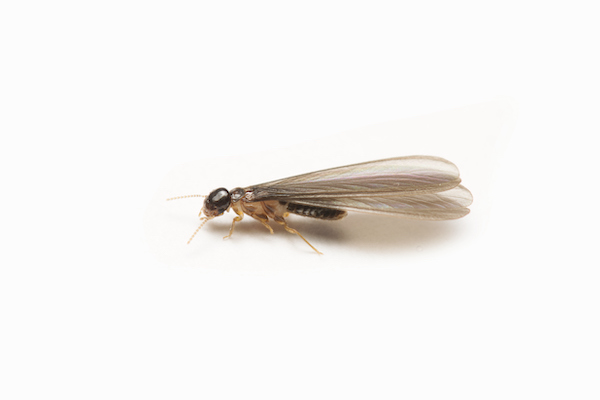
Flying Termites / Termite Flight
Flying termites or alates are the new kings and queens that are released from nests each year in their annual mating flight or swarm. These termite swarms occur on warm humid nights in spring and summer, when thousands can be released from a mature nest and often nearby nests will have their swarms at the same time. Kings and queens will drop to the ground, shed they wings, pair off and move away to find a potential location to start a new nest.
If you see flying termites around lights on a warm evening, or when you get up in the morning you find lots of wings on the ground, it means that you have a large termite nest nearby… maybe even under the house. Time for an immediate termite inspection!
Types of termites in Melbourne and Victoria
In Geelong, Melbourne and indeed much of Victoria, the most common type of termite that causes the majority of damage is the subterranean termite, Coptotermes. Coptotermes can form large nests of up to a million individuals and so if they attack your home, they can cause significant damage in as little as 6 months. There are actually two common species of Coptotermes in Victoria, Coptotermes acinaciformis and Coptotermes frenchi. It is important for a termite professional to be able to tell the difference, as the two species have some different behaviours and so sometimes it can impact the proposed termite treatment.
These two termite species don’t build mounds in Victoria. They build their nests underground or at the base of trees and can be very difficult to locate. That is why it is always important for homeowners to assume a termite nest is nearby and protect their home accordingly.
Termite Myths
We get a lot of questions about termites and hear a lot of strange things. Here are some of the common myths that we hear on a regular basis:
- Termites will not eat treated pine. They will eat it, if there is nothing better on offer.
- Termites will not attack a house on a concrete slab. They often find ways into concrete slab houses through cracks in the slab and over the edge of the slab and through the brickwork.
- Metal framed homes are safe from termites. Sure, the metal is safe, but termites will still attack door frames, wooden floors, etc.
- Metal ant caps stop termites. Termites should not be able to get through ant caps (although sometimes they have holes or are rusted through). However, termites can build around ant caps (this is how they are designed to work) – allowing their activity to be spotted.
- You will know if you have termites in your home. Termites are very secretive. Often the first time they are noticed in the home is when significant damage has already been done.
- Termites do not fly. Each year mature termite colonies will release thousands of flying termites – the new kings and queens looking to start a new nest.
- If I have black ants around my home, I won’t get termites. Whereas some species of black ant do prey on termites, termites have evolved to avoid ants and indeed their termite tunnels provide great protection. We have often seen black ants and termites within centimetres of each other (and the black ants don’t even know the termites are there).
- If I have black ants around my home, I won’t get termites. Whereas some species of black ant do prey on termites, termites have evolved to avoid ants and indeed their termite tunnels provide great protection. We have often seen black ants and termites within centimetres of each other (and the black ants don’t even know the termites are there).
